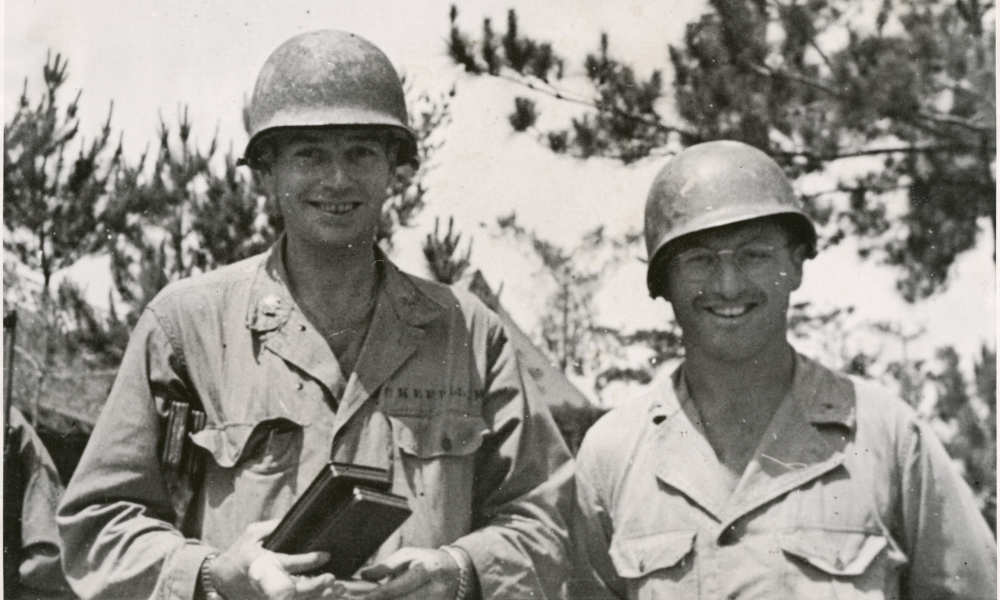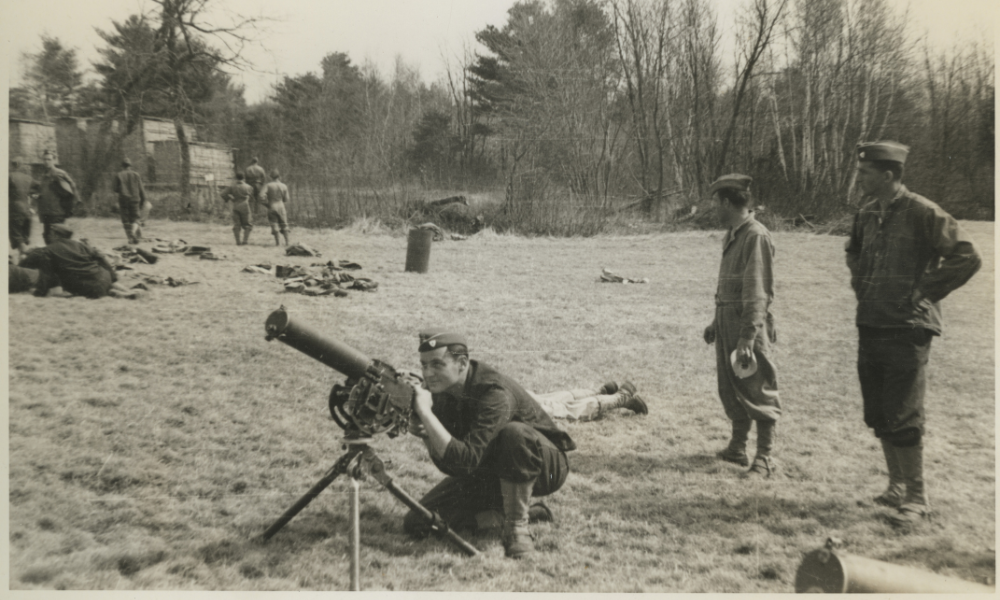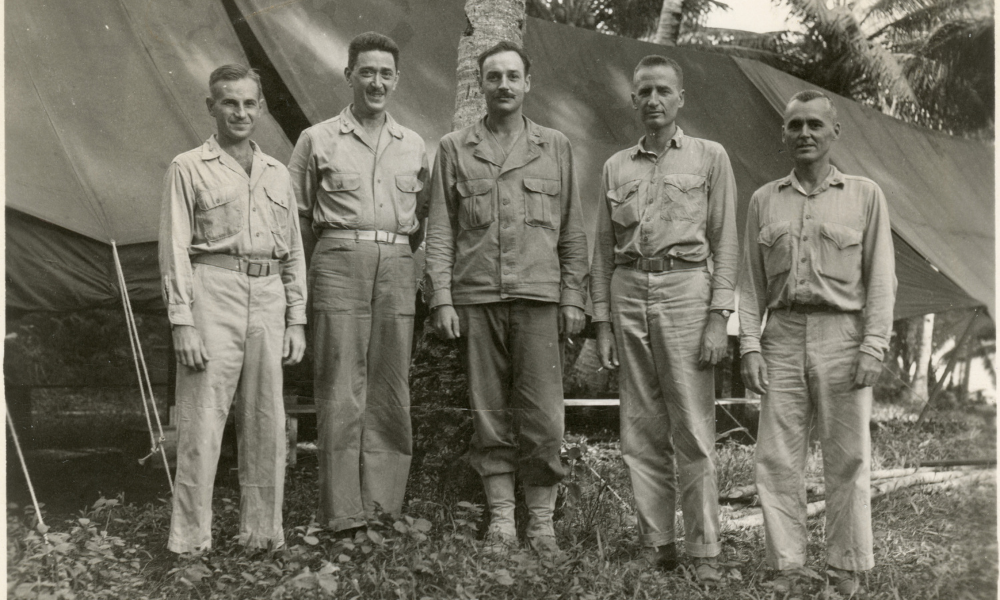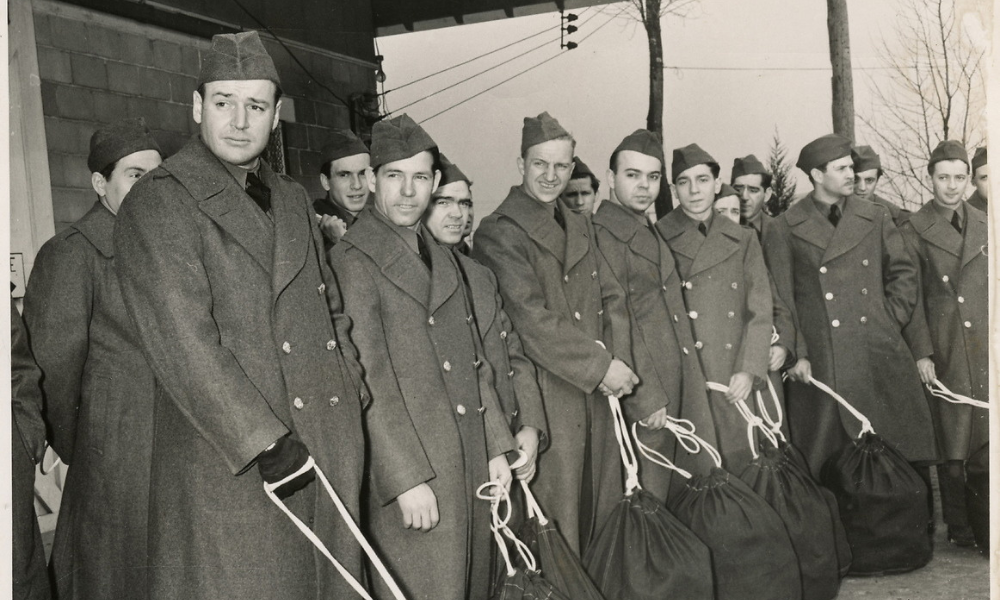by Lucas Potts
Winthrop Rockefeller’s military service is no small part of his life’s story and legacy. He was the only Rockefeller brother injured in combat and the only brother to enlist before WWII began. The latter was influenced mainly by what he saw and experienced while working in the Middle East and Europe as a young man. He knew the war was well on its way to the United States and responded accordingly. That response resulted in one of the defining moments of Winthrop’s military career: the Battle of Guam.
Upon entering the U.S. Army in 1941, he was shuffled around from base to base for the first couple of days until he found his first home in the service: First Division, Twenty-Sixth Regiment, Company M. One year later, he was assigned to the 77th Infantry Division and, subsequently, the 305th Infantry Regiment and given command of Company H. He was promoted to the rank of Major in 1944, just three years after enlisting. In late March of that same year, following various exercises across the country, Winthrop and his men departed from San Francisco on the USS General M. Black for their overseas deployment.
They spent several days at sea before arriving in Honolulu, Hawaii, and wasted no time preparing for their campaign in the Pacific. The goal was to gain footing by capturing the two islands of Saipan and Tinian, then moving to the Japanese-occupied Guam. During the attack on Saipan, U.S. forces encountered heavy resistance and casualties on the island. The fighting continued even once the 77th left Hawaii to go to the island of Eniwetok Atoll.
Once they arrived, they learned that Saipan had been recaptured and prepared to take Guam. The island was heavily bombed for weeks to soften the Japanese’s defenses, pending an infantry push by both the U.S. Marines and the U.S. Army. In late July, Winthrop’s landing craft departed from the ship to the south of the Orote Peninsula (the U.S.’s primary target on the island) and encountered parts of a coral reef that made passing inaccessible by boat. The soldiers tried to walk or swim along the reef to reach the shore.



Two times, Winthrop had to rescue a fellow soldier from drowning in bomb craters scattered across the reef, and on the second occasion, nearly drowned himself. He got himself and the sergeant major to shore through quick thinking and an inflatable life belt. This act made headlines back home. After reaching the beach, the two received new orders to hold in place due to heavy sniper fire further inland. The men in Winthrop’s landing craft were able to regroup the following day, and they received their next orders to move forward on the island. Just shy of three weeks after the 305th’s arrival, on August 10, 1944, Guam was declared secure.
Over the next few months, Winthrop moved from campsite to campsite across Guam, managing various projects and helping his men where possible. Eventually, the orders came in late October to leave Guam and head for New Caledonia. Although this is just a blip in Winthrop’s overall military career, it showcases his resolve and desire to help others in need — a trait that went on to show itself in his service to Arkansas and its people.
Historical information for this blog post was provided by Winthrop Rockefeller: From New Yorker to Arkansawyer, 1912-1956, by Dr. John A. Kirk.
Dr. Kirk is the George W. Donaghey Distinguished Professor of History and director of the University of Arkansas at Little Rock Anderson Institute on Race and Ethnicity at the University of Arkansas at Little Rock.


